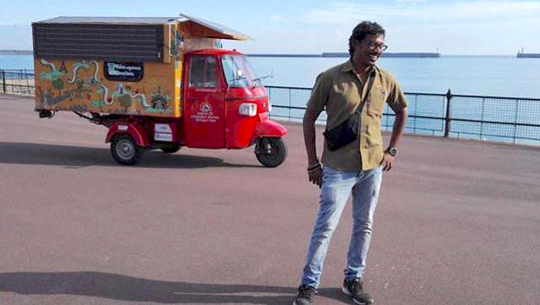London, Sep 14: Indian-origin engineer Naveen Rabelli drove for 10,000-km on a solar-powered auto-rickshaw from India to London to create awareness of alternative mobility solutions for passenger vehicles in Asian and European countries using renewable energy.

The auto, also known as 'tuk-tuk' in some parts of the world, had set off from Bengaluru in February.
Rabelli, 35, arrived at Dover ferry crossing in the UK yesterday, five days later than expected because he was robbed during a toilet break last week as he approached the ferry crossing from France.
The diesel-powered autorickshaw cost him USD 1,500 to buy, on which he spent an additional USD 11,500 to get it ready for the zero-emission adventure, entitled 'Tejas'.
"The purpose of this journey is to create awareness of alternative mobility solutions for passenger vehicles in Asian and European countries using renewable energy – mix of solar and electricity," explains Rabelli, who refused to let the robbery in France get him down.
"My passport and wallet were stolen when I parked to go to the toilet at a fast food restaurant at Sarcelles, about 45 km west of Paris.
I reported it to the police, where there were some language issues but after a few hours they found an officer who could speak English.
They are very helpful and sorry when they heard that I was about to finish my trip," he said.
India-born Rabelli, who now holds an Australian passport, was able to acquire an emergency travel document and complete his journey.
He plans to drive up to Buckingham Palace in London this week and also attend the Low Carbon Vehicle Event 2016 in Millbrook, Bedfordshire, tomorrow and Thursday.
"The aim was to highlight an entirely Indian solution to the world and show the benefits of using a prototype that is reliable, feasible and affordable," said Rabelli.
The specially-modified autorickshaw, which is equipped with a bed, food cupboard and solar-powered cooker, was shipped from India to Bandar Abbas in Iran from where he kick-started the overland mission to drive through Iran, Turkey, Bulgaria, Serbia, Austria, Switzerland, Germany and France before arriving in the UK.
His website solartuktuk.com offers people the chance to track his journey and donate to his cause of promoting green transport.





Comments
Add new comment